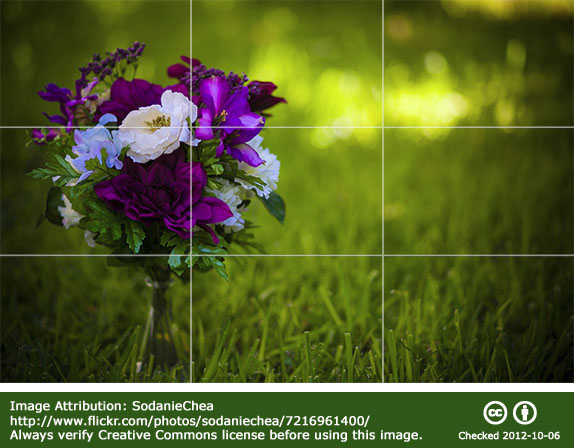A handful of photo composition tips will start making your work look better almost immediately. The ‘Rule of Thirds’ is a great place to start.
It seems to me that some people have the ‘gift’ of instinctively seeing a great photograph. Well that wasn’t me — when I first started taking photographs my main struggle was with composition. I wasn’t artistic by nature and couldn’t just ‘see’ a good picture. I had to work at the ‘rules’ — learning to see scenes in my mind’s eye not as they were but how I wanted them to look on paper.
The first ‘rule’ of composition I learned was called the ‘Rule of Thirds’. This rule says that a picture tends to look nicer if you avoid putting the main subject bang in the center of the frame but place it in one of four special places within the frame instead.
Photo Composition Tips
Of all the photography rules the Rule of Thirds is probably the easiest to understand and use.
You visualize the four special places by first imagining that the photograph is divided by lines that split it in to three equally spaced columns and three equally spaced rows.
I have drawn the lines for you on to this photograph of a ‘bee at work’ by Rhett Maxwell.
Notice how the main subject – the flower and bee – is not placed centrally but more-or-less on one of the places where the lines cross. Imagine what this photograph would have looked like if the flower had been placed in the center of the frame — wouldn’t it have been less interesting?
Here is another photography Rule of Thirds example by SodanieChea:

You’ll notice that the position of the main subject doesn’t have to be exact. Both photographers could have chosen to make the positioning more precise but slavishly following rules of composition can make for dull photographs.
Breaking the Rules!
You should learn the rules and, once you know them well, you can begin to break them for reasons of creativity — just as many painters who are famous for their abstract painting could paint amazing photo-realistic images yet chose to adopt other styles for artistic merit.
Some camera viewfinders or viewscreens can have the lines we use for the Rule of Thirds superimposed upon the live image. This can be a useful tool but learn to visualize the positioning so you can look at a scene and begin to compose before you lift your camera to your eye.

Hey! I have just found your site and read some of your articles. I have clicked the like button and look forward to seeing more of your stuff on facebook.
Sandra A
This is a good introduction to the Rule of Thirds. Take a look at this page for some more examples: http://www.photoextract.com/plus-extract/2012/11/29